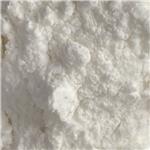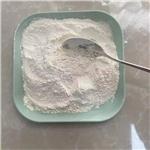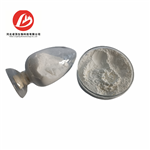- Pantoprazole
-

- $35.00/ kg
-
2024-03-16
- CAS:102625-70-7
- Min. Order: 1kg
- Purity: 99.8%
- Supply Ability: 200tons/year
- Pantoprazole
-

- $50.00 / 1kg
-
2023-08-02
- CAS:102625-70-7
- Min. Order: 1kg
- Purity: 99%
- Supply Ability: 1000tons
- Pantoprazole
-

- $55.00 / 1KG
-
2022-06-08
- CAS:102625-70-7
- Min. Order: 1KG
- Purity: 99%
- Supply Ability: 9000kg/per week
|
| | Pantoprazole Basic information |
| | Pantoprazole Chemical Properties |
| Melting point | 139-140° (dec) | | Boiling point | 586.9±60.0 °C(Predicted) | | density | 1.51±0.1 g/cm3(Predicted) | | storage temp. | Inert atmosphere,Store in freezer, under -20°C | | solubility | Chloroform (Slightly), Methanol (Slightly, Heated, Sonicated) | | pka | pKa1 3.92; pKa2 8.19(at 25℃) | | form | Solid | | color | Off-White to Pale Orange | | BCS Class | 3 | | InChI | InChI=1S/C16H15F2N3O4S/c1-23-13-5-6-19-12(14(13)24-2)8-26(22)16-20-10-4-3-9(25-15(17)18)7-11(10)21-16/h3-7,15H,8H2,1-2H3,(H,20,21) | | InChIKey | IQPSEEYGBUAQFF-UHFFFAOYSA-N | | SMILES | C1(S(CC2=NC=CC(OC)=C2OC)=O)NC2=CC(OC(F)F)=CC=C2N=1 | | CAS DataBase Reference | 102625-70-7(CAS DataBase Reference) |
| | Pantoprazole Usage And Synthesis |
| Description | Pantoprazole, an irreversible proton pump inhibitor, reached its first market
worldwide in Germany for acute treatment of gastric and duodenal ulcers and
gastroesophageal reflux disease. Proton pump inhibitors are more effective than
other strategies in inhibiting acid secretion since they function at the final step of
acid production, therefore, provide superior symptom relief and healing in all acid
related diseases. As the third substituted benzimidazole proton pump inhibitor
marketed, pantoprazole not only has superior ulcer-preventing effect but also is
more potent than omeprazole in healing acetic acid-induced gastric and duodenal
ulcers with extremely low acute toxicity. The mechanism of action for this class of
compounds has been suggested to be mediated via the protonated form of the
molecule which selectively reacts with cysteines present on the extracytoplasmic
face of the enzyme to form covalent disulfide bonds. | | Originator | Byk Gulden (Germany) | | Uses | proton pump inhibitor, gastric acid release inhibitor, antiulcer | | Definition | ChEBI: A member of the class of benzimidazoles that is 1H-benzimidazole substituted by a difluoromethoxy group at position 5 and a [(3,4-dimethoxypyridin-2-yl)methyl]sulfinyl group at position 2. | | Manufacturing Process | 2-Chloromethyl-4,5-dimethoxy-3-methylpyridinium chloride (about 1.5 g) are added to a solution of 5-difluoromethoxy-1H-benzimidazole-2-thiol in 10 ml of ethanol and 10 ml of 1 N sodium hydroxide solution. The yellow reaction mixture is stirred at 20°C for 1 hour, a further 10 ml of water are added,
whereupon a colorless solid precipitates out, the mixture is stirred for a further 5 hours and filtered and the residue is rinsed with 1 N sodium hydroxide solution and water and dried to constant weight. The 5difluoromethoxy-2-[(4,5-dimethoxy-2-pyridyl)methylthio]-1H-benzimidazole is obtained as an oil.
5-Difluoromethoxy-2-[(4,5-dimethoxy-2-pyridyl)methylthio]-1H-benzimidazole (about 1 g) are dissolved in 10 ml of dioxane and 2 ml of 1 N sodium hydroxide solution. An equimolar amount of a titrated aqueous sodium hypochlorite solution, to which 1 mole per liter of sodium hydroxide solution has been added, is first added dropwise, while cooling with ice. After one hour a further equivalent and after 3 hours half the equimolar amount of sodium hypochlorite are added, to achieve complete reaction. After a reaction time of 4 hours, 5 ml of 5% strength sodium thiosulfate solution and another 25 ml of dioxane are added and the upper dioxane phase is separated off, washed once with 5 ml of sodium thiosulfate solution and concentrated on a rotary evaporator. The oily residue is dissolved in 20 ml of water and 10 ml of ethyl acetate and the solution is brought to pH 7 with about 100 ml of a buffer solution of pH 6.8. The solid which has precipitated out is filtered off with suction over a suction filter, washed with water, extracted by stirring at 0C with acetone and dried. 5-Difluoromethoxy-2-[(4,5-dimethoxy-2pyridyl)methanesulfinyl]-1H-benzimidazole is prepared; yield about 85%. | | Brand name | Pantozol; Rifun | | Therapeutic Function | Antiulcer | | Clinical Use | Pantoprazole | | Veterinary Drugs and Treatments | Pantoprazole may be useful in treating or preventing gastric acidrelated
pathologies in dogs, cats, foals and camelids, particularly
when the intravenous route is preferred. Pantoprazole is available
in both intravenous and oral tablet (delayed-release) formulations.
One study (Bersenas, Mathews et al. 2005) performed in dogs, comparing
the gastric pH effects of intravenous pantoprazole with oral
omeprazole, intravenous ranitidine, and intravenous famotidine,
found at the dosages used, that pantoprazole was more effective
than ranitidine, but similar to famotidine, and that oral omeprazole
was more effective in maintaining intragastric pH >3 for a longer
period than pantoprazole.
Pantoprazole has been shown to directly reduce in vitro counts
of H. pylori and is used in some H. pylori treatment protocols for
humans. | | Drug interactions | Potentially hazardous interactions with other drugs
Anticoagulants: effect of coumarins possibly
enhanced.
Antifungals: absorption of itraconazole and
ketoconazole reduced; avoid with posaconazole.
Antivirals: concentration of atazanavir and rilpivirine
reduced - avoid; concentration of raltegravir and
saquinavir possibly increased - avoid.
Clopidogrel: possibly reduced antiplatelet effect.
Cytotoxics: possibly reduced excretion of
methotrexate; avoid with dasatinib, erlotinib and
vandetanib; possibly reduced lapatinib absorption;
possibly reduced absorption of pazopanib.
Ulipristal: reduced contraceptive effect, avoid with
high dose ulipristal. | | Metabolism | Pantoprazole is extensively metabolised in the liver,
primarily by the cytochrome P450 isoenzyme CYP2C19,
to desmethylpantoprazole; small amounts are also
metabolised by CYP3A4, CYP2D6, and CYP2C9.
Metabolites are excreted mainly in the urine, with the
remainder being excreted in faeces via the bile. | | references | [1] jungnickel p w. pantoprazole: a new proton pump inhibitor. clinical therapeutics, 2000, 22(11): 1268-1293.
[2] sachs g, shin j m, howden c w. review article: the clinical pharmacology of proton pump inhibitors. alimentary pharmacology & therapeutics, 2006, 23(s2): 2-8. |
| | Pantoprazole Preparation Products And Raw materials |
|